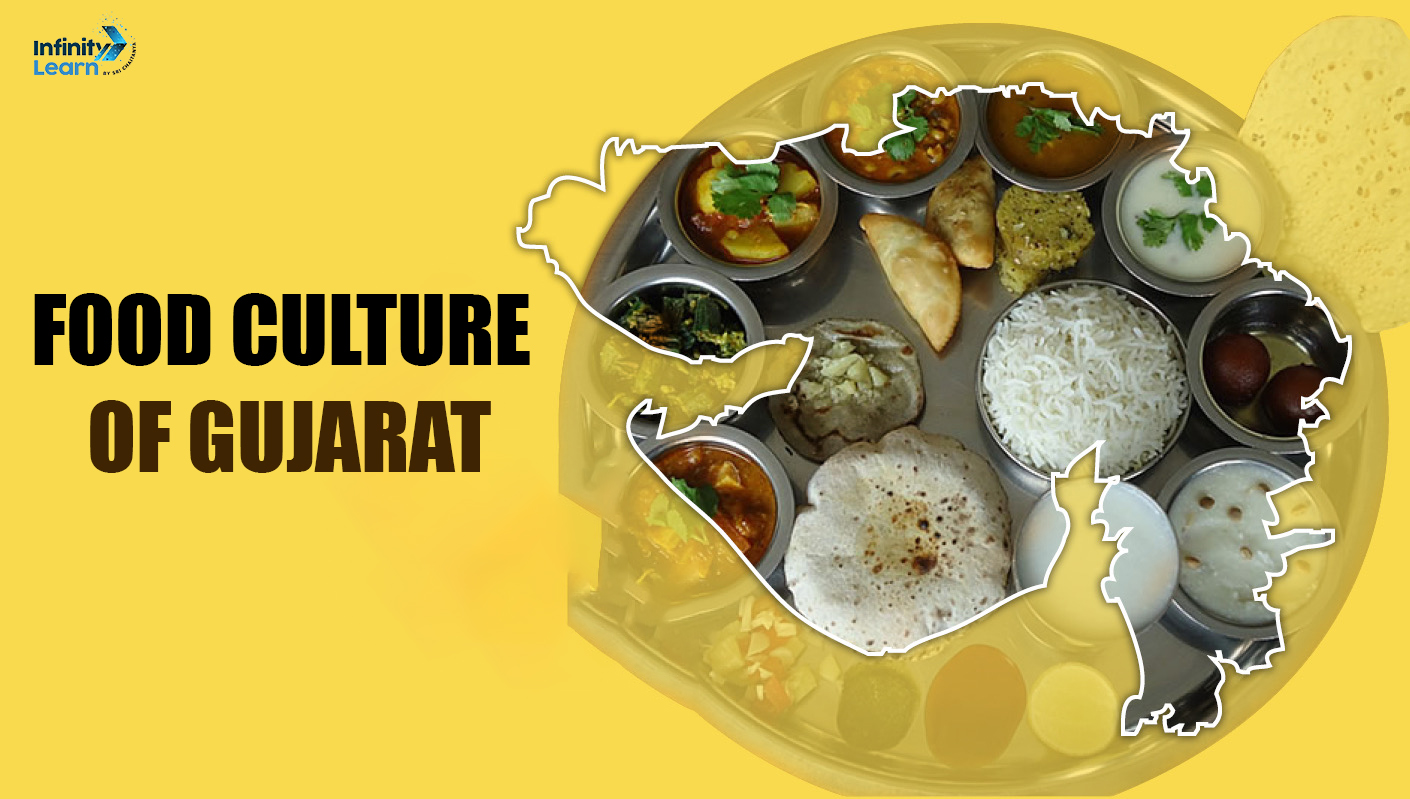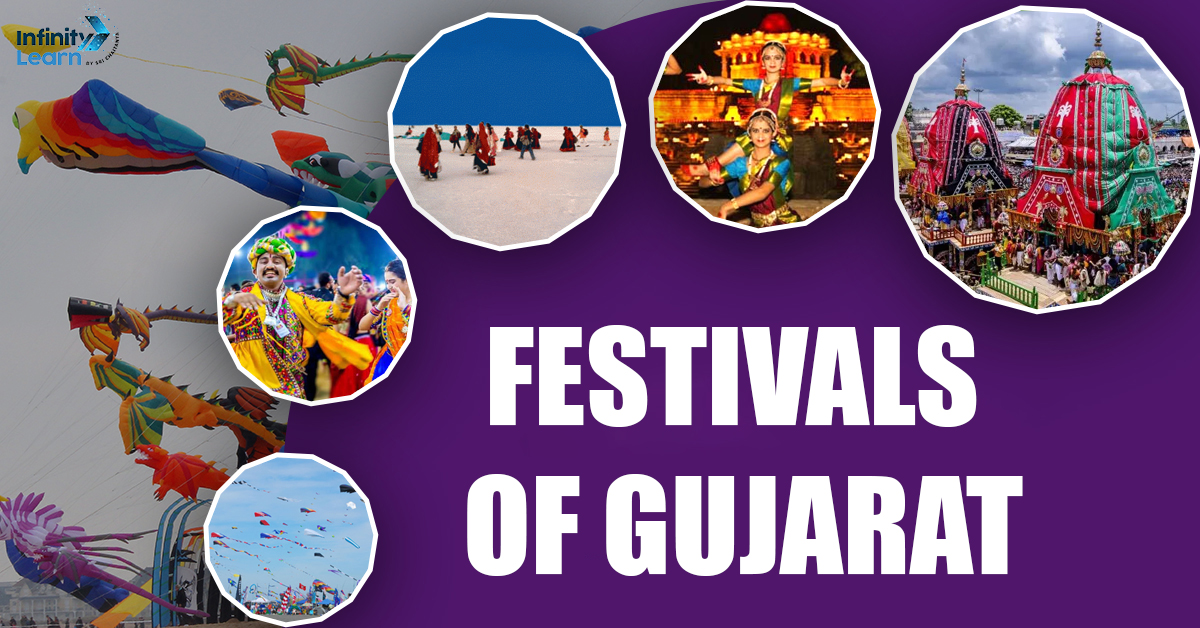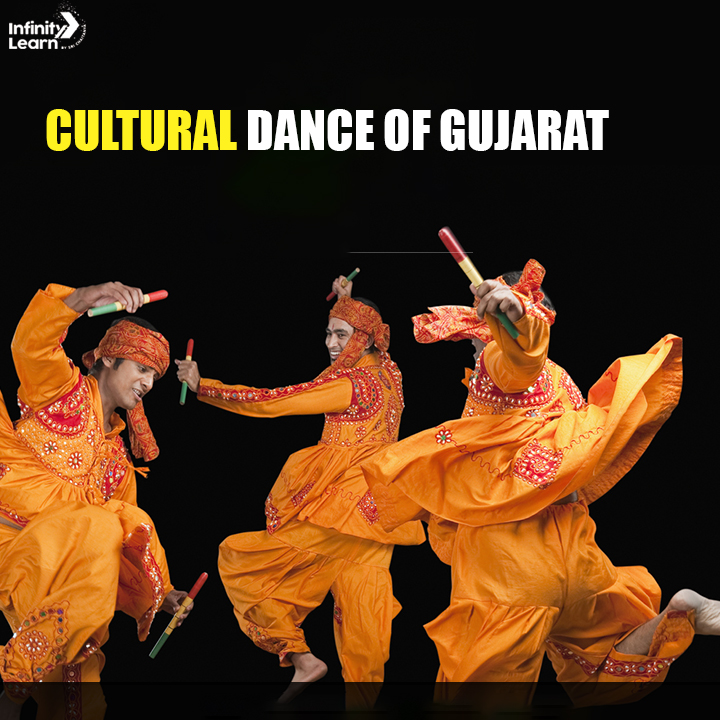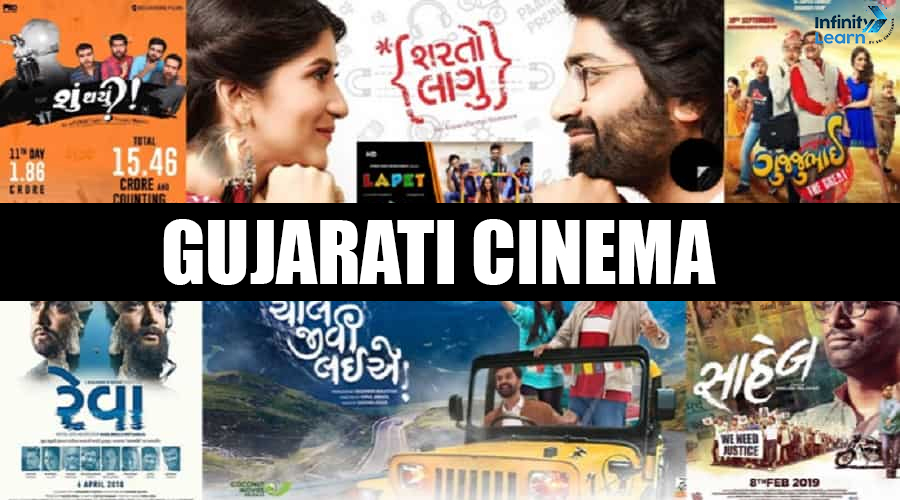Table of Contents
Overview of Gujarat Culture
Gujarat, a state in western India, is known for its rich cultural heritage. It reflects a mix of tradition and modern life. Gujarat stands out for its lively festivals, delicious food, and colorful crafts. The culture in Gujarat is a unique blend of the past and present. The people here are friendly and enterprising, and they speak Gujarati. The state also hosts lively celebrations like Navratri and Uttarayan, which make it special. Gujarat’s rich culture adds to India’s diverse mix, making it an interesting region.
History of Gujarat Culture
Ancient Times: Gujarat’s culture can be traced back to around 2500 BCE when the Indus Valley Civilization thrived here. We can see this in places like Lothal and Dholavira, which had well-planned cities and trade with other civilizations.
Medieval Period: During the middle ages, Gujarat had a mix of Hindu and Islamic cultures, especially under the rule of the Mughal Empire. This time brought impressive buildings and a blend of art, music, and literature.
Maritime History: Gujarat’s location by the coast made it a hub for trade with places like Africa, Arabia, and Southeast Asia. This trade influenced its culture, bringing in different customs, traditions, and food.
British Rule: When the British ruled India, Gujarat went through significant changes in society and economy. It was also a time when leaders like Mahatma Gandhi emerged, playing a big role in India’s fight for independence and shaping the culture and politics of Gujarat.
After Independence: After India became independent in 1947, Gujarat became its own state in 1960. Since then, it has developed a modern culture while keeping its old traditions alive.
Food Culture of Gujarat
Food culture means the way people eat and enjoy food in their daily lives. It includes their habits, traditions, and the things they believe about food. Different cultures have their own unique foods, which help them keep their identity. Traditional dishes are an important part of this food culture, and when people share a meal with friends and family, it creates a warm and friendly atmosphere.
Food culture is important because it uses local and seasonal ingredients, which helps us connect with our own culture and other cultures. While food is important in most cultures, some cultures value it more than others. Writing about food and culture allows people to explore their love for food, like trying different dishes from around the world, learning about American cooking, or discovering foods introduced by immigrants.

Festivals of Gujarat
- Navratri: Gujarat’s most famous festival is Navratri, celebrated energetically over nine nights to honor Goddess Durga. People wear colorful traditional clothes and enjoy dances like Garba and Dandiya Raas all night long.
- Uttarayan (Makar Sankranti): On January 14th each year, Gujarat hosts a big kite festival. The skies fill with colorful kites, symbolizing the awakening of gods from their deep sleep. It marks the end of winter and the arrival of spring.
- Rann Utsav: Held in Kutch during the winter for about three months, this festival celebrates local culture, crafts, and traditions. It features folk dances, music, and crafts set against the backdrop of a white salt desert.
- Janmashtami: Dwarka, a significant Hindu city, celebrates Janmashtami with enthusiasm, marking Lord Krishna’s birth. The city comes alive with reenactments of Krishna’s life, devotional singing, and festive gatherings.
- Tarnetar Fair: A colorful rural fair near Tarnetar village, known for traditional marriage rituals and tribal culture. It’s famous for folk music, dance, traditional outfits, and a unique umbrella exhibition.
- Bhavnath Mahadev Fair: This fair at the Bhavnath Mahadev Temple in Junagadh during Mahashivratri includes a procession of Naga Sadhus and attracts pilgrims from all over the country.

Gujarat Culture Dress
Gujarat, a culturally rich state in India, has special cultural dress of Gujarat its lively culture. The way people in Gujarat dress is different from the rest of India, blending old traditions with new ones.
For men, the traditional Gujarati of Gujarat is a dhoti and kurta, often with a phento (a type of turban). On special occasions, they wear a kediyu and phento. Chorno, loose cotton pants, are also worn by Gujarati men. Chorno can be tied with a string or have elastic at the waist.
Cultural dress of Gujarat for women usually includes chaniya choli or ghagra choli, along with chaniyo, choli, chunni, and saree, along with an odhni (dupatta or chunni). The chaniya looks like a lehenga or ghagra and includes a blouse and an odhni or dupatta.
In cities, where women work, wearing sarees every day can be hard. People wear traditional clothes like these during special times, like weddings or Navratri festivals. The clothes in Gujarat are known for their bright colors, detailed designs like bandhani or bandhej, and embroidery with gold and zari threads. People also wear fancy jewelry with these outfits to complete the look.

Cultural Dance of Gujarat
Gujarat has a rich culture with lively traditional dances. These dances are colorful and full of energy, reflecting the local way of life.
One famous dance in Gujarat is Garba. It’s named after the Sanskrit words for “womb” and “lamp.” People perform Garba around a central lamp or an image of Goddess Shakti. Garba celebrates fertility, honors women, and pays tribute to mother goddesses. It’s also part of the nine-day Navratri festival in September or October.
In Garba, people dance in a circle, moving counterclockwise around a picture of a mother goddess like Durga or a symbol of her creative power, often an illuminated clay or water pot.
Gujarat also enjoys other spiritual dances, like those from Sufi culture. The state has a rich tradition of classical dance forms like Bharat Natyam, Kathak, and Odissi, which are also popular.
One major annual dance festival in Gujarat is the Modhera Dance Festival. It’s a platform for artists, both established and emerging, to showcase their talents against the backdrop of the Sun Temple.

Gujarati Cinema
Gujarati cinema, also known as Dhollywood, is where they make movies in the Gujarati language, which is spoken a lot in Gujarat, India. It’s based in Ahmedabad and is one of India’s important film industries. It’s getting more popular, and they release more movies each year.
In the past, Gujarati films used to tell traditional stories about people in Gujarat. But nowadays, they tell more modern stories about the changing world and the experiences of Gujarat’s people.
More actors and filmmakers are joining the Gujarati film industry, making it more competitive and creative. They also work with filmmakers from other parts of India and even from other countries.
You can watch Gujarati movies on TV, like Colors Gujarati Cinema. And now, many Gujarati films are on platforms like YouTube, so more people can watch them.

Languages of Gujarat
Gujarat, a state in India, has a rich cultural heritage and many languages spoken within its borders. The primary language here is Gujarati, which is also the foundation for other regional languages. Hindi is spoken in cities, English is used in education and jobs, Sindhi is common in Saurashtra, Marathi is heard in central and southern areas, Kutchi is native to the Kutch region, and Kathiyawadi is spoken in Kathiawad. Additionally, Surti is used in Surat, Charotari in central Gujarat, and Rathvi, Vasavi, and Bheel are tribal languages.
Gujarati itself has various dialects, including Standard Gujarati, Surati, Kathiyawadi, Kharwa, Khakari, and Tarimukhi. These dialects may differ in vocabulary, pronunciation, and grammar, but they are all part of the broader Gujarati language. The linguistic diversity in Gujarat reflects the state’s cultural heritage and historical influences from different communities.
Religion of Gujarati People
The majority of people in Gujarat practice Hinduism, with around 90% of the population following this religion. Among Gujarati Hindus, there are two main groups: one worships Vedic and Puranic deities, while the other doesn’t believe in regular deities and idol worship.
The first group includes Shaivites, Shaktas, Vaishnavites, and followers of minor deities. The second group belongs to more recent sects like Arya Samaj and Kabir Panthi.
Gujarati Hindus value rituals like bathing and fasting, which they do once a week and every eleventh day in a fortnight. They also believe in concepts like Heaven, Hell, and the cycle of rebirth. They aim to improve their status in this life and the next through devotion to God, charity, and kindness towards others and cows. There are also smaller communities of Muslims, Jains, and Parsis in Gujarat. Muslims make up about 8.73% of the population, mainly Sunnis.
Despite these differences, modern Gujarati society is known for religious tolerance and unity among different communities, contributing to the region’s rich culture.
Gujarati Literature
Gujarati literature has a long and diverse history, going back to the 12th century. The earliest writings in Gujarati were by Jain scholars, and the language had fully developed by the late 12th century.
The history of Gujarati literature can be split into three main periods: the early period (up to around 1450 A.D.), the middle period (up to 1850 A.D.), and the modern period (from 1850 A.D. onwards).
During the medieval period, the literature was heavily influenced by the Bhakti movement, and poets like Narsimha Mehta were prominent during this time.
In the modern period, novelists like Govardhanram Tripathi emerged, and he wrote “Sarasvatichandra,” which was the first social novel in Gujarati literature.
Gujarati literature includes various forms like poetry, novels, plays, essays, and biographies. This period is considered a golden era when all these forms of writing reached their peak.
The themes of Gujarati literature cover a wide range, from devotion to God and love of nature to social and existentialist topics.
Gujarati literature has made significant contributions to Indian literature as a whole and is known for its heartfelt and touching poetry.
It also represents the cultural values of the region through folk songs, narratives, theater, and aphorisms.
Interesting Facts About Gujarat Culture
- Language Variety: In addition to Gujarati, Gujarat has various local dialects and languages like Kutchi, Bhili, and Gamit, which show its diverse culture.
- Home of Asiatic Lions: The Gir Forest in Gujarat is the only place in the world where you can find Asiatic Lions living in the wild, which is a symbol of the state’s unique natural heritage.
- Historic Buildings: Gujarat is famous for its stepwells, known as ‘Vavs’ locally. The Rani ki Vav in Patan is a UNESCO World Heritage site because of its beautiful carvings and historical importance.
- Gandhi’s Birthplace: Gujarat is where Mahatma Gandhi, the leader of India’s independence movement, was born. His ashram in Ahmedabad, Sabarmati Ashram, is an important historical and cultural site.
- Cultural Villages: The state promotes its culture through model villages like Hodka and Dhordo in Kutch, where visitors can see traditional lifestyles, crafts, and local food.
- Navratri Celebrations: Gujarat’s Navratri is not just about dancing and music; it also involves setting up thematic dolls and figurines in homes, telling stories from mythology and culture.
- Kite Museum: Ahmedabad has a unique Kite Museum that displays traditional and modern kites, some of which are centuries old, reflecting the importance of kite flying in Gujarati culture.
- Vegetarianism: Gujarat is known for its mostly vegetarian cuisine, influenced by Jainism and Hinduism, which is a part of its cultural identity.
- Patola Silk Sarees: Patan is famous for its double ikat woven Patola silk sarees, which are not just clothing but also symbols of status and heritage. They are known for their durability and intricate designs woven from memory.
- Dandiya Sticks: In the traditional dance form of Dandiya Raas, the sticks used represent the swords of Goddess Durga, adding a spiritual aspect to the dance.
FAQs on Culture of Gujarat
What is the culture of Gujarat?
The culture of Gujarat is a vibrant blend of traditions, festivals, dance, music, and cuisine. It's known for its colorful attire, folk arts, and strong community spirit.
What is the tradition of Gujarat?
Traditional practices in Gujarat include folk dances like Garba and Dandiya, kite flying during Uttarayan, and celebrating festivals like Navratri with great enthusiasm.
What is Gujarat mainly known for?
Gujarat is mainly known for its rich cultural heritage, the Asiatic Lion in Gir Forest, architectural wonders like stepwells, and as the birthplace of Mahatma Gandhi.
What are Gujaratis famous for?
Gujaratis are famous for their entrepreneurial spirit, warm hospitality, vibrant festivals like Navratri, and a cuisine that offers an array of delectable vegetarian dishes.
Which God is popular in Gujarat?
Lord Krishna is particularly popular in Gujarat, especially in the city of Dwarka, which is considered a major pilgrimage site and holds significant religious importance.
What is the cultural food of Gujarat?
The cultural food of Gujarat includes items like Dhokla, Thepla, Fafda, Jalebi, and Khandvi, emphasizing vegetarian dishes often with a hint of sweetness.









